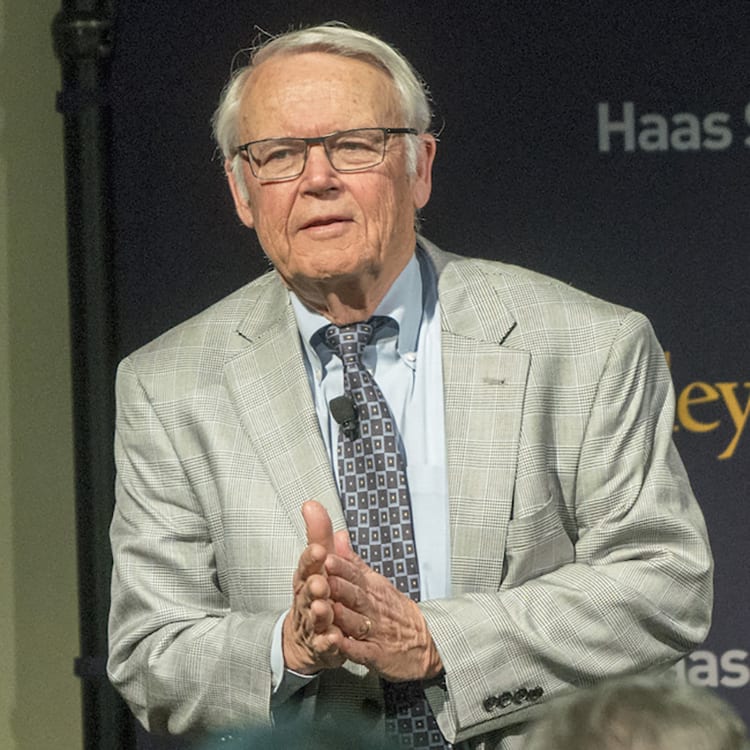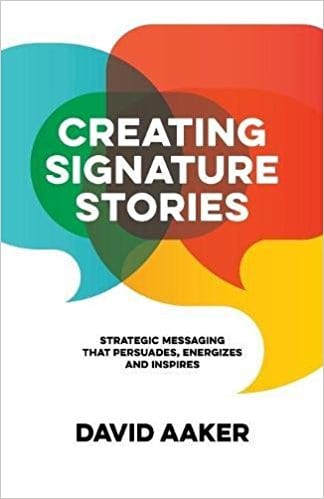In Creating Signature Stories, emeritus marketing professor David Aaker explains why storytelling is essential for brand marketing.
Back in 1984, Zhang Ruimin was promoted to lead a struggling Chinese refrigerator company that would later become Haier. When a customer brought in a defective fridge, he went through an inventory of 400 units to find a replacement; unfortunately, he found that 20 percent of them were also faulty. Zhang promptly ordered all of the defective units to be brought to the factory floor and gave the employees sledgehammers, inviting them to destroy them.

“That dramatic story led to a change in the firm’s quality culture that is a foundation of Haier today,” says David Aaker, emeritus professor of marketing strategy. “Asserting that the firm was going to have a quality-first culture would not be noticed or believed. But the story penetrates.”
Aaker uses that example in his new book, Creating Signature Stories: Strategic Messaging that Energizes, Persuades and Inspires, to show how effective stories can be in creating an organizational culture or managing a brand’s image. “It is so difficult today to cut through the clutter and engage a disinterested and skeptical audience,” Aaker says. “Stories are enormously powerful, and can be much more impactful than facts.”
“Father of modern branding”
Author of 100 articles and 15 books who has been called the “father of modern branding,” Aaker is currently vice chairman of the brand consultancy Prophet. He was inspired to write the book by conversations with his daughter, Jennifer Aaker, a behavioral psychologist at Stanford Graduate School of Business. Stories work, studies have found, because they engage the emotions, allow listeners to deduce the logic for themselves, and are much more difficult to argue against than facts. “There are hundreds of studies that demonstrate the power stories have,” says Aaker.
For businesses, stories can be helpful in engaging both employees and customers. “There is a whole cadre of young employees who will not work for companies they are not proud of,” says Aaker. “If you want to compete for the best people, you need to have a higher purpose, and the way to communicate that is with a story.” At the same time, a small but meaningful subset of customers are looking for authentic engagement with a brand. “Even if this percentage of the market is small, it can still be the difference between making money and losing money.”
Creating a signature story
 For companies looking to find or create a “signature story,” Aaker first recommends they hone the strategic message they are trying to communicate. Then, he suggests that they focus on a protagonist who can exemplify that messages—whether it’s a customer, an employee, a leader, or a product. L.L. Bean company founder Leon L. Bean, for example, had a stitching problem with the first 100 boots he sold that made them less than watertight. He refunded every customer’s money, though it nearly put him out of business. Nordstrom often repeats the story of an employee in Alaska, who—when a customer brought in a pair of tires to return—gave him a full refund even though the store didn’t sell tires.
For companies looking to find or create a “signature story,” Aaker first recommends they hone the strategic message they are trying to communicate. Then, he suggests that they focus on a protagonist who can exemplify that messages—whether it’s a customer, an employee, a leader, or a product. L.L. Bean company founder Leon L. Bean, for example, had a stitching problem with the first 100 boots he sold that made them less than watertight. He refunded every customer’s money, though it nearly put him out of business. Nordstrom often repeats the story of an employee in Alaska, who—when a customer brought in a pair of tires to return—gave him a full refund even though the store didn’t sell tires.
If a company doesn’t have a ready-made story of their own, they can borrow a story from elsewhere. In the 1990s, incoming Columbia CEO Peter Guber faced a dysfunctional workplace of competing departments. He united them with the story of Lawrence of Arabia, who famously united warring Arab tribes to capture the strategic city of Aqaba. He presented executives with pictures of actor Peter O’Toole playing Lawrence in the eponymous Columbia film, and made “Aqaba” a rallying cry in the company.
Authenticity is key
While there is “no checklist of elements a signature story has to have,” Aaker says it helps if it is intriguing, authentic, and engaging. Generating and testing such stories can take serious investment by companies, some of which have hired editors, videographers, and social media experts, and even chief story officers to make up a storytelling team. After creating a signature story, it can become an art in itself to disseminate it and keep it alive over time. To this day, Haier has a sledgehammer on display at its corporate offices in China.
One of the most effective signature stories that Aaker describes in his book is Lifebuoy soap, which has worked to educate children in developing countries on the importance of handwashing to prevent disease. The company has created a series of videos of parents and children in India as part of its “Help a Child Reach 5” campaign—in one of them, for example, a mother is dancing joyously by a tree. It turns out that the custom in the village is to mark a child’s birthday on the tree, and she was celebrating the fact that her child turned five, in a place where many don’t reach that milestone. “Compare that with any effort to explain why Lifebuoy bar soap was better than others, or even to factually describe the hand-washing program,” Aaker says.
Making the story effective required a real commitment on the part of Lifebuoy, which has set a goal of changing handwashing for 1 billion people by 2020. But that commitment has paid off: to date, the videos have had more than 44 million views. By learning how to tell those kind of authentic and emotionally engaging signature stories, companies can assure that their employees and companies associate them with a higher purpose, creating loyalty to the brand for years to come.
David Aaker will talk more about Signature Stories at his Dean’s Speaker Series at 12:30 pm Tuesday, Feb. 13, in Chou Hall’s Spieker Forum. The paperback goes on sale March 8 (Kindle version now available).